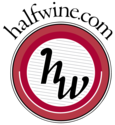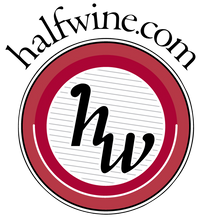Sparkling
Champagne
Champagne Blend
Cork
Dry
Light Oak
ABV 12%
Tasting notes
A golden colour with a beautifully fine mousse. The nose is aromatic and complex with ripe apple fruit and spicy aromas. Brioche lingers on the lasting finish. A subtle combination of structure, length and vivacity. A great aperitif but also brilliant with seafood. Best served not too cold - between 10 and 12°C.
Why we recommend this wine
After visiting St Martin On The Walls in Wareham, Dorset one summer’s eve, we sat on the banks of a navigable stream awaiting dinner. I looked at the wine list but didn’t recognise anything but then I saw a half bottle of Bollinger and thought, "If it's good enough for 007, it’s good enough for me." Needless to say they brought a full bottle. After that it became our ‘house’ champagne if one can aspire to such a thing.
This wine
A blend of 60% Pinot Noir, 25% Chardonnay, 15% Meunier. An initial fermentation partially carried out in oak barrels; a blend comprising two different harvests, together with magnums of reserve wines – wines from Grand and Premier crus vinified in oak - the recipe Bollinger’s Special Cuvée’s very own style – and, lastly, ageing for twice as long as is stipulated by the regulations for the non-vintage champagne. The dosage is a moderate 8 to 9 grams per liter.
The wine estate
The story began with Athanase de Villermont, the youngest son of a noble family, who was a great soldier who shone during the American War of Independence. He inherited an extensive estate from his family in the Aÿ area. He immediately foresaw the extraordinary potential of the wines of Champagne, but as an aristocrat he was forbidden to become involved in trade. He then met Joseph Bollinger, a widely travelled German who had come to learn about the Champagne wine trade, and Paul Renaudin, a local man who was fascinated by the world of wine. The firm of Renaudin-Bollinger & Cie was founded on 6th February 1829.
The House’s 178 hectares contain 85% of Grand Cru and Premier Cru vineyards. Those in Aÿ, Avenay, Tauxières, Louvois et Verzenay are planted with Pinot Noir, Cuis with Chardonnay and Champvoisy with Pinot Meunier. Bollinger is one of a very few champagne Houses to produce the majority of their own grapes for their blends. Pinot Noir represents 60% of the House’s vineyard, corresponding to the exact proportion of this demanding grape variety in the Special Cuvée blend.
The embrace of nature is fundamental to the Bollinger approach of respecting the environment, which has seen it become the first Champagne House to be awarded the Haute Valeur Environmentale certification.
champagne-bollinger.com
Food and wine
Any fish, especially sushi and sashimi, prawn, crayfish and grilled lobster. Poultry and white meat are also a great match along with Parmesan cheese and good cured ham. Also see our guide to pairing food and wine here.
Did you know?
Elisabeth married Jacques Bollinger in 1923. She was only 42 when she lost her husband at the height of the war. Without hesitation and with great dignity she stepped in to take up the torch. "Madame Jacques”, as she was known within the House, threw herself heart and soul into her new role.
Cheerful and witty, Madame Bollinger was nonetheless a formidable strategist. A dauntless businesswoman, she was also highly perfectionist and would tolerate nothing short of excellence. She was always ready to innovate, and was the driving force behind the highly original Bollinger R.D. cuvée. With her customary common sense, Madame Bollinger gathered around her those family members who were most able to follow in her footsteps to ensure the future of Bollinger.
The familiar image of her cycling through the vineyards is imprinted in the region's memories. What a remarkable woman!
A golden colour with a beautifully fine mousse. The nose is aromatic and complex with ripe apple fruit and spicy aromas. Brioche lingers on the lasting finish. A subtle combination of structure, length and vivacity. A great aperitif but also brilliant with seafood. Best served not too cold - between 10 and 12°C.
Why we recommend this wine
After visiting St Martin On The Walls in Wareham, Dorset one summer’s eve, we sat on the banks of a navigable stream awaiting dinner. I looked at the wine list but didn’t recognise anything but then I saw a half bottle of Bollinger and thought, "If it's good enough for 007, it’s good enough for me." Needless to say they brought a full bottle. After that it became our ‘house’ champagne if one can aspire to such a thing.
This wine
A blend of 60% Pinot Noir, 25% Chardonnay, 15% Meunier. An initial fermentation partially carried out in oak barrels; a blend comprising two different harvests, together with magnums of reserve wines – wines from Grand and Premier crus vinified in oak - the recipe Bollinger’s Special Cuvée’s very own style – and, lastly, ageing for twice as long as is stipulated by the regulations for the non-vintage champagne. The dosage is a moderate 8 to 9 grams per liter.
The wine estate
The story began with Athanase de Villermont, the youngest son of a noble family, who was a great soldier who shone during the American War of Independence. He inherited an extensive estate from his family in the Aÿ area. He immediately foresaw the extraordinary potential of the wines of Champagne, but as an aristocrat he was forbidden to become involved in trade. He then met Joseph Bollinger, a widely travelled German who had come to learn about the Champagne wine trade, and Paul Renaudin, a local man who was fascinated by the world of wine. The firm of Renaudin-Bollinger & Cie was founded on 6th February 1829.
The House’s 178 hectares contain 85% of Grand Cru and Premier Cru vineyards. Those in Aÿ, Avenay, Tauxières, Louvois et Verzenay are planted with Pinot Noir, Cuis with Chardonnay and Champvoisy with Pinot Meunier. Bollinger is one of a very few champagne Houses to produce the majority of their own grapes for their blends. Pinot Noir represents 60% of the House’s vineyard, corresponding to the exact proportion of this demanding grape variety in the Special Cuvée blend.
The embrace of nature is fundamental to the Bollinger approach of respecting the environment, which has seen it become the first Champagne House to be awarded the Haute Valeur Environmentale certification.
champagne-bollinger.com
Food and wine
Any fish, especially sushi and sashimi, prawn, crayfish and grilled lobster. Poultry and white meat are also a great match along with Parmesan cheese and good cured ham. Also see our guide to pairing food and wine here.
Did you know?
Elisabeth married Jacques Bollinger in 1923. She was only 42 when she lost her husband at the height of the war. Without hesitation and with great dignity she stepped in to take up the torch. "Madame Jacques”, as she was known within the House, threw herself heart and soul into her new role.
Cheerful and witty, Madame Bollinger was nonetheless a formidable strategist. A dauntless businesswoman, she was also highly perfectionist and would tolerate nothing short of excellence. She was always ready to innovate, and was the driving force behind the highly original Bollinger R.D. cuvée. With her customary common sense, Madame Bollinger gathered around her those family members who were most able to follow in her footsteps to ensure the future of Bollinger.
The familiar image of her cycling through the vineyards is imprinted in the region's memories. What a remarkable woman!




